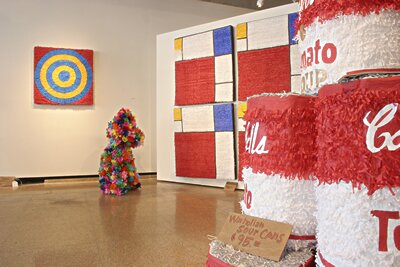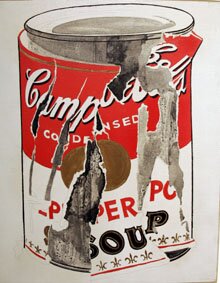October 2007
Monthly Archive
Monthly Archive
Posted by ben on 13 Oct 2007 | Tagged as: books, poetry
In the Animal Shelter
Every time you see a beautiful woman, someone is tired of her, so the men say. And I know where they go, these women, with their tired beauty that someone doesn’t want — these women who must live like the high Sierra white pine, there since before the birth of Christ, fed somehow by the alpine wind.
They reach out to the animals, day after day smoothing fur inside the cage, saying, “How is Mama’s baby? Is Mama’s baby lonesome?”
The women leave at the end of the day, stopping to ask an attendant, “Will they go to good homes?” And come back in a day or so, stooping to examine a one-eyed cat, asking, as though they intend to adopt, “How would I introduce a new cat to my dog?”
But there is seldom an adoption; it matters that the women have someone to leave, leaving behind the lovesome creatures who would never leave them, had they once given them their hearts.
— Amy Hempel (from At the Gates of the Animal Kingdom, you should buy )
Posted by ben on 11 Oct 2007 | Tagged as: responses/reviews, silliness
The following comments on the work of Sol LeWitt were sent in by artist, writer, and Emvergeoning reader Chris Karcher. While this piece isn’t a revolutionary reevaluation of LeWitt, I think Karcher’s emphasis on the playful, humorous, and lyrical aspects of LeWitt’s work helps to balance a critical narrative that is too often weighted toward detached conceptualism. I hope you enjoy it.
The two recent exhibits of new work by Sol LeWitt (“Scribble Wall Drawings,” PaceWildenstein Gallery and “A Cube with Scribbled Bands in Four Directions, One Direction on Each Face,” Paula Cooper Gallery – see this Weekend Update at artnet.com) provide an occasion to comment on the legacy of an iconic American artist. This short note is inspired by the fact that LeWitt died in April of 2007, and both exhibits consist of work created after his death.
The catalog produced in conjunction with a retrospective of LeWitt’s work at the San Francisco Museum of Modern Art from 2000 wanders across a lifetime of output starting with early figurative work, then moves on to the geometric work with which he remains closely associated and finishes with the later paintings of irregular brush strokes and lines. LeWitt produced a staggering number of drawings and paintings. In between he oversaw the creation of large numbers of constructions, sculptures and wall drawings. It certainly appears that the man enjoyed making things. And, that he enjoyed painting and drawing.
“The idea itself, even if not made visual, is as much a work of art as any finished product.” LeWitt wrote this in 1967 and it remains, perhaps, the most prevalent conception of what his art was about; the idea, not the output. LeWitt was widely known for his use of other artists to actually create his “finished product,” so it is not unreasonable that people assume Lewitt was above the dirty work of putting pen-to-paper or brush-to-canvas. This notion of the artwork itself not being the point dogged LeWitt throughout his career. Yet his later work is so colorful and lyrical that the label “conceptual” no longer seems to encapsulate it. His comment from 1982, “I would like to produce something I would not be ashamed to show Giotto,” may better speak to LeWitt’s true sensibilities as an artist.
The notion of playfulness seems to escape many discussions about LeWitt and his work. Even such exhausting projects as the “Incomplete Open Cubes” series – with all its manifestations – has, at its core, a jocular sensibility. The cubes as drawings, as photographs, as small sculptures, as big sculptures, in black, in white, all obsessively depict the 122 variations. The doodles evolve into isometric renderings that become little models that become big sculptures that are in turn photographed, all of which are printed in little books and pamphlets. It is not unlike a great shaggy-dog joke. Avoid getting caught up in intellectual analysis and the juxtaposition of an incomplete cube in a gallery filled with baroque and mannerist paintings has its lighter side.
His process of seeking every combination of a series served, among other things, to ensure that LeWitt had plenty of material to work with. Seemingly endless variations of bands in four directions were turned out in seemingly endless varieties of mediums. The consistency of the form allowed for an opportunity to fully explore the interaction of colors, or in the case of sculpture, the interaction of light and shadow. LeWitt repeatedly set strict limits that allowed for infinite variety. Jorge Luis Borges, in an essay tracing the various manifestations of a single thought across time and literature, arrived at a final summation that also describes the work of LeWitt, “an infinite sphere whose center is everywhere and whose circumference is nowhere.”
The art of LeWitt should not be defined by hard logic and cool detachment. LeWitt’s work is better appreciated for the humor, color and inventiveness that Giotto would have enjoyed.
Posted by ben on 11 Oct 2007 | Tagged as: books, essays, poetry
The history of the infinite circle (no, not that infinite circle), from the Corpus Hermeticum to Borges. Don’t miss the Paul Klee material. (This information will come in handy.)
Posted by ben on 08 Oct 2007 | Tagged as: responses/reviews
When I opened up my RSS feeds this morning, I was glad to see Karl Benjamin getting some attention in the NYT. I discovered his work through the wonderful exhibition of Benjamin drawings at Lawrence Markey gallery last year (and I hear Markey is in the process of organizing a showing of Benjamin’s paintings as well). Then I noticed that the eagle-eyed Tyler Green caught a couple of problems in the article.
As Tyler points out, the article claims that the term “hard-edge painting” originated in London, when in fact it was first used in LA. I think I see what happened here; the term “hard-edge painting” was coined by LA Times art critic Jules Langsner, who curated and wrote the text for the catalog of the Four Abstract Classicists show that the NYT (and generally, everyone writing about Benjamin) cited. However, “hard-edge” was not in the title of the show until it traveled to London, and the term was later popularized by British art critic Lawrence Alloway. So Jori Finkel (who wrote the NYT article) seems to have assumed that the term originated with Alloway rather than Langsner. But a quick review of the Wikipedia article could have cleared all of this up.
As for Tyler’s more significant assertion that the NYT tends to talk as if the art world revolves around New York (”the movement offered a Californian counterpart to geometric work by Ellsworth Kelly, Frank Stella and the New York Color Field painters”), that’s less justifiable. Four Abstract Classicists was mounted in 1959, the same year that Stella first began to be recognized in New York.
UPDATE: Tyler Green writes to say that John McLaughlin had been showing since 1953 (and had been painting for 15 years before exhibiting), meaning that he was developing his voice well before even Kelly began showing work. I have wondered if Joseph Albers had been a common inspiration to the California hard-edgers and the early New York minimalists, but haven’t been able to determine if McLaughlin, Benjamin, Lorser Feitelson, or Frederick Hammersley were actually aware of Albers’ work. The New Yorkers were clearly aware of his work, considering his involvement with Black Mountain started in 1933.
Posted by michelle on 07 Oct 2007 | Tagged as: music
Chingo Bling for El Presidente 2008 means Hillary you better learn some Spanglish. Sorry no posts this week, everyone seems to be incommunicado. Happy Birthday, Ben! Still in Marfa…
Posted by michelle on 01 Oct 2007 | Tagged as: responses/reviews

Just a reminder to visit Artpace this week to see the pinata installation that Franco put together this month. Although I’m a little late on this one, you can see more photos from his recent exhibition at Aljira Center for Contemporary Art in New Jersey.


You should start saving your iconic soup cans and pinata paraphernalia, as the BBC reports the Warhol glorified design will cease to exist due to a change in management. One of the original Warhol’s is currently on exhibit at Austin Museum of Art, alongside a giant BLT by Claes Oldenburg. Mmmmm, good.